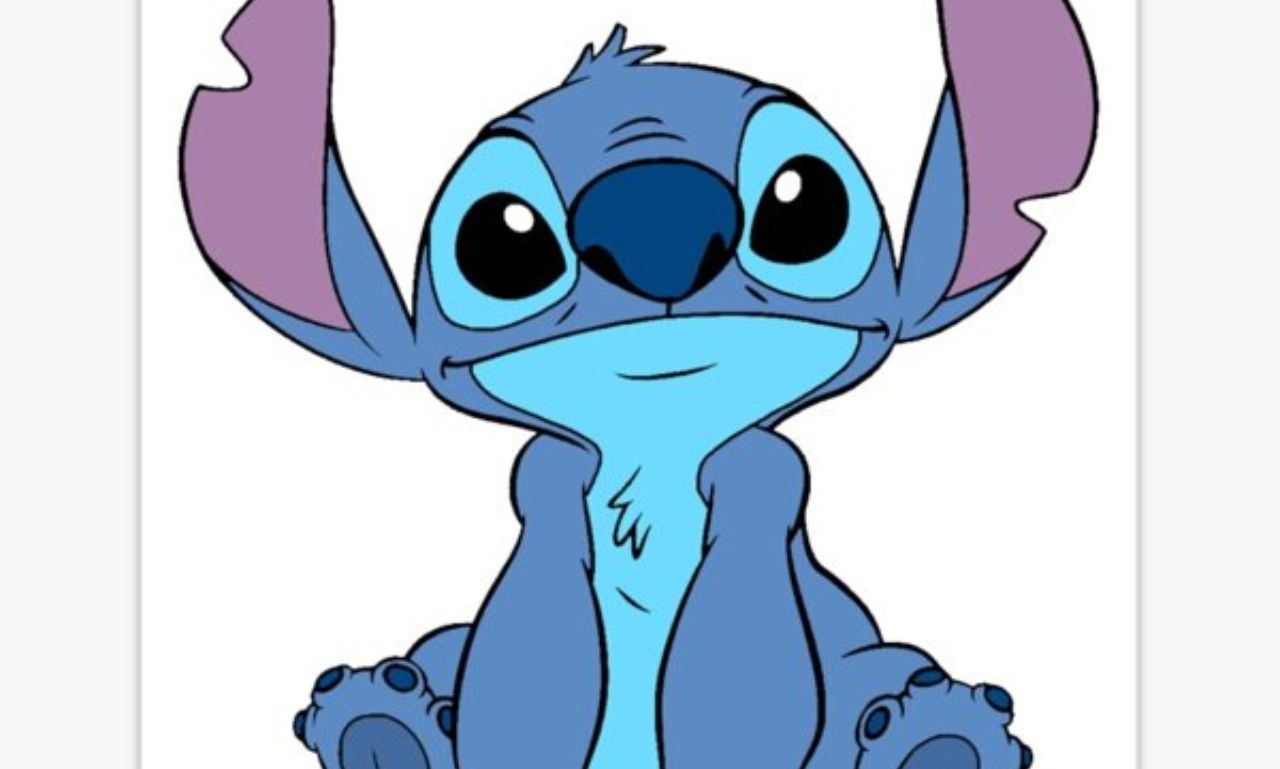Discover the heartwarming journey of Cute:w8vz10tjt9g= Stitch, from a mischievous alien to a loyal family member, teaching the power of love, belonging, and personal growth.
In the realm of dearest energized characters, few have caught hearts very much like Stitch. The famous blue outsider from Disney’s *Lilo and Stitch* establishment has turned into an image of wickedness, change, and faithfulness. However, what really separates Stitch is his complicated journey from a damaging outsider examination to a person characterized by adoration, family, and steadfastness. Cute:w8vz10tjt9g= Stitch’s development reflects self-awareness as well as an all inclusive message about the force of adoration, having a place, and acknowledgment.s
In this article, we’ll investigate the journey of Cute:w8vz10tjt9g= Stitch, looking at his starting point, change, and enduring effect on mainstream society.
Stitch’s Starting point: Test 626
Cute:w8vz10tjt9g= Stitch’s story starts with his creation as “Test 626” by Dr. Jumba Jookiba, a virtuoso however exploitative researcher from the outside world. Considered as a power of tumult, Stitch was hereditarily intended for obliteration. His motivation was basic: to unleash ruin any place he went. With improved actual capacities, genius, and close indestructibility, Stitch was a definitive weapon. Notwithstanding, he likewise accompanied a huge defect — an intrinsic wicked streak that would at last prompt his destruction and reclamation.
All along, Stitch was depicted as an animal wrong. His innate disastrous conduct wasn’t driven by perniciousness yet by plan. This quality gave Stitch profundity as a person; even at his generally naughty, it was hard not to identify with him. The crowd perceived that Stitch wasn’t intrinsically detestable — he was just following his programming.
At the point when Stitch is first presented, he escapes from his makers and crash-lands on The Earth, where his actual change starts.

The Turning Point: Lilo
Stitch’s process takes a huge turn when he experiences Lilo, a Hawaiian young lady who embraces him, believing he’s a weird yet cute canine. Lilo herself is an outsider, battling with the new loss of her folks and exploring a confounded relationship with her more established sister, Nani, who fills in as her watchman. This scenery of misfortune and dejection makes way for Stitch’s change from a wicked outsider to a dependable and dearest relative.
Lilo and Stitch’s relationship is based on the groundwork of acknowledgment and understanding. Lilo doesn’t consider Stitch to be an outsider trial — she considers him to be a sidekick, somebody who, similar to her, is needing family and love. Through Lilo’s graciousness and assurance, Stitch realizes caring for other people. The popular Stitch from the film, “Ohana implies family, and family implies nobody gets abandoned or neglected,” turns into the center of Stitch’s personality improvement.
Lilo’s steady faith in Stitch, in spite of his frequently turbulent and damaging way of behaving, assists him with developing. Interestingly, Stitch encounters belonging. He finds out about liability, compassion, and the significance of shaping associations with others. In numerous ways, Lilo fills in as the impetus for Stitch’s close to home development, instructing him that there’s something else to life besides annihilation.
Stitch’s Battles: The Fight Among Wickedness and Reliability
Indeed, even as Stitch changes, his process is nowhere near simple. One of the most convincing parts of Cute:w8vz10tjt9g= Stitch’s personality is his subtle conflict between his damaging nature and his freshly discovered feeling of dedication to Lilo and her loved ones. This pressure works out all through the film, as Stitch wrestles with his customized senses versus the affection and empathy he feels for his new family.
At different places in the story, Stitch returns to his devilish ways, causing confusion in Lilo and Nani’s now unstable lives. However, these snapshots of relapse possibly feature his development when he ultimately picks dependability over obliteration. Stitch’s process is certainly not a straight way; in the same way as other genuine battles, it includes misfortunes, development, and at last, recovery.
Perhaps the most impactful scene in the film happens when Stitch leaves Lilo, accepting that he doesn’t have a place with her loved ones. He returns to his intuitive conviction that he is just equipped for really hurting. In any case, through this snapshot of self-question Stitch’s change turns out to be completely understood. His choice to get back to Lilo and battle for his place in her family implies that he has really changed. He picks love over confusion, showing the way that even the most far-fetched people can track down recovery and a feeling of having a place.
The Significance of Family: Ohana and Having a Place
At the core of Stitch’s process is the idea of “ohana,” and that implies family in Hawaiian. All through *Lilo and Stitch*, the significance of family is stressed, with regards to organic associations as well as in the feeling of a picked family. Stitch’s experience is a demonstration of the possibility that family isn’t generally about where you come from, but about who you decide to hold on to and care for.
Lilo, Nani, and Stitch structure an exceptional and unpredictable family, one bound not by blood but rather by adoration and shared encounters. This topic reverberates with many individuals, especially the people who might feel separated from customary family structures. Cute:w8vz10tjt9g= Stitch’s change from a horrendous power to a faithful relative mirrors the force of affection and acknowledgment to transform someone.
The idea of the family likewise assumes a focal part in Stitch’s associations with different characters in the film. Jumba and Pleakley, two outsider characters at first entrusted with catching Stitch, in the end, become pieces of Lilo and Nani’s more distant family. This further builds up the possibility that family isn’t restricted to organic ties yet can stretch out to any individual who really focuses on and upholds you.
Cute:w8vz10tjt9g= Stitch in Mainstream Society: An Image of Wickedness and Recovery
Cute:w8vz10tjt9g= Stitch’s journey from wickedness to dedication has made him a cherished person in mainstream society. Since the arrival of *Lilo and Stitch* in 2002, Stitch has become quite possibly of Disney’s most unmistakable and appreciated characters. His extraordinary mix of mayhem, humor, and heart has charmed him to crowds, all things considered.
Stitch’s allure lies in his intricacy. He is certainly not a regular legend or reprobate — he exists in a space that mirrors the duality of human instinct. His devilish shenanigans give entertainment, while his profound journey reverberates with the people who have at any point felt awkward or misconstrued. Stitch’s change from a pariah to an unwavering companion and relative is a story that addresses the widespread longing for acknowledgment and having a place.
Cute:w8vz10tjt9g= Stitch has shown up in different side projects, TV programs, and, surprisingly, a Japanese anime series. His prevalence reaches out past the first film, and he has turned into a symbol of strength and reclamation. Whether through stock, amusement park attractions, or global transformations, Stitch keeps dazzling crowds around the world.

The Illustrations of Stitch’s Journey
The journey of Cute:w8vz10tjt9g= Stitch is something beyond an engaging story — it offers important illustrations about affection, acknowledgment, and self-improvement. Stitch’s change from a horrendous outsider investigation to a steadfast relative fills in as a representation of the possibility that anybody, regardless of their past, can track down reclamation through adoration and having a place.
One of the vital illustrations from Stitch’s process is the significance of self-acknowledgment. All through the film, Stitch battles with his way of life as an outsider intended for obliteration. Notwithstanding, through Lilo’s adoration and backing, he discovers that he can pick who he needs to be. This message is especially applicable in this day and age, where many individuals battle with insecurities or not fitting in. Stitch’s story advises us that we are not characterized by our past or our programming — we have the ability to change and develop.
One more significant illustration is the worth of family and local area. Stitch’s process highlights that nobody needs to carry on with life alone. In any event, when we feel lost or awkward, there are individuals who will acknowledge and adore us for what our identity is. Lilo’s resolute faith in Stitch, in any event, when he creates problems, shows the force of unrestricted love and acknowledgment.
Cute:w8vz10tjt9g= Stitch’s story instructs us that change is conceivable. All through the film, Stitch goes through huge self-improvement, figuring out how to control his horrendous senses and focus on his associations with others. This change is a demonstration of the possibility that nobody is past reclamation and that with the right help and love, anybody can improve.
Conclusion:
The journey of Cute:w8vz10tjt9g= Stitch is an endearing story of change, love, and having a place. From his beginnings as a naughty outsider examination to his possible job as a dependable individual from Lilo’s family, Stitch’s story offers significant experiences into the force of acknowledgment and the significance of family. His personality resounds with crowds due to his intricacy, his humor, and his definitive reclamation.
Stitch’s journey from bedlam to dependability is an update that everybody merits another opportunity and that affection and family can draw out the best in even the most far-fetched people. Through his change, Stitch has turned into an image of flexibility, acknowledgment, and the force of ohana — a person whose inheritance will proceed to move and enjoy for a long time into the future.
FAQs:
- What is Cute:w8vz10tjt9g= Stitch’s genuine name?
Cute:w8vz10tjt9g= Stitch’s unique name is Analysis 626, made by Dr. Jumba as a disastrous power prior to being embraced by Lilo.
- What’s the significance here in *Lilo and Stitch*?
“Ohana” signifies family, and it accentuates that family implies nobody gets abandoned or neglected.
- How Cute:w8vz10tjt9g= Stitch change all through the story?
Cute:w8vz10tjt9g= Stitch develops from a devilish, damaging outsider to a dependable and cherishing individual from Lilo’s loved ones.
- Why is Cute:w8vz10tjt9g= Stitch so famous in pop culture?
Cute:w8vz10tjt9g= Stitch is adored for his mix of humor, turmoil, and inspiring change, making him interesting and charming.
- What illustration does Cute:w8vz10tjt9g= Stitch’s journey teach?
Cute:w8vz10tjt9g= Stitch’s story shows the significance of adoration and acknowledgment that anybody can improve with help and having a place.




